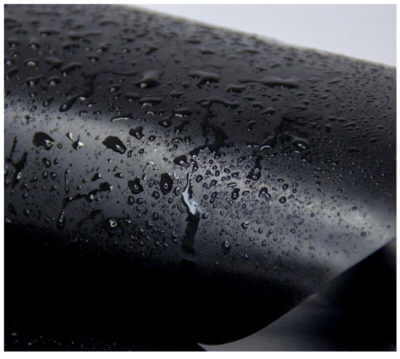When it comes to environmental protection, containment, and construction, geomembranes are a fundamental component in a variety of industries. Whether used for water conservation, waste management, or erosion control, geomembranes are indispensable for providing a reliable and durable solution. In this article, we will explore what geomembranes are, their applications, and why they are essential for projects where effective containment is crucial.

I.Understanding Geomembranes
Geomembranes are synthetic liners designed to control fluid or gas migration. These impermeable barriers are primarily made from polymeric materials such as high-density polyethylene (HDPE), low-density polyethylene (LDPE), and polyvinyl chloride (PVC). A geomembrane serves as a protective layer that prevents the leakage of harmful substances into the surrounding environment, safeguarding both soil and water sources.
Their impermeability makes geomembrane liners an essential solution in projects like landfills, ponds, and canals where controlling seepage and leakage is critical. Their ability to withstand harsh conditions further enhances their value, particularly in long-term applications.
II.Applications of Geomembranes
Geomembrane liners are widely used in various industries due to their adaptability and reliability. Below are some key applications:
Waste Containment:
One of the primary uses of geomembranes is in landfills. They prevent hazardous materials from contaminating groundwater by acting as an impermeable barrier. Often used alongside geotextiles and other materials, geomembranes ensure that waste is safely contained.
Water Conservation:
In irrigation canals, reservoirs, and artificial ponds, geomembranes help conserve water by preventing seepage into the soil. This makes them highly valuable in water management projects, especially in areas where water conservation is crucial.
Mining:
The mining industry utilizes geomembrane liners in tailing ponds and heap leaching operations. These liners provide containment for toxic byproducts, preventing environmental contamination.
Aquaculture:
Fish farms and other aquaculture facilities benefit from geomembrane liners as they create controlled aquatic environments, ensuring that water levels are maintained and that the habitat remains clean.
Erosion Control:
Geomembranes help prevent erosion in coastal areas, rivers, and embankments by stabilizing the soil and providing a barrier against water flow.
III.Types of Geomembranes
Various types of geomembranes are designed to suit specific project requirements. Below are the most common types:
HDPE (High-Density Polyethylene):
HDPE geomembranes are known for their toughness and resistance to chemicals. They are commonly used in landfills and mining applications due to their durability and ability to withstand extreme environments.
LLDPE (Linear Low-Density Polyethylene):
LLDPE geomembranes offer greater flexibility than HDPE, making them ideal for applications requiring a liner to adapt to uneven or irregular surfaces.
PVC (Polyvinyl Chloride):
PVC geomembranes are lightweight and flexible, making them easy to install. They are commonly used in small-scale projects like decorative ponds or temporary solutions.
Each material provides specific advantages, and consulting with a supplier can help determine which geomembrane is best suited for your project.
IV.Ensuring Proper Installation
The installation of geomembrane liners requires careful planning and preparation to ensure optimal performance. The surface where the liner will be placed should be cleared of sharp objects, rocks, or debris that could puncture or tear the material. A well-prepared surface is crucial for the liner’s longevity and effectiveness.
Additionally, seam welding is an important aspect of installation. Properly welded seams prevent leaks and ensure that the geomembrane remains watertight. Regular inspections during and after installation are necessary to catch any issues early and avoid costly repairs down the line.
V.Benefits of Using Geomembranes
Using geomembranes in various industries offers several key benefits:
Environmental Protection:
Geomembranes act as a barrier that prevents harmful substances from contaminating soil and water, making them vital in waste management and chemical containment projects.
Cost-Effectiveness:
Despite their strength and durability, geomembrane liners are a cost-effective solution due to their long lifespan and minimal maintenance needs.
Versatility:
The flexibility of geomembrane liners makes them applicable in a wide range of projects, from water conservation to industrial waste containment.
Durability:
Geomembranes are designed to withstand harsh environmental conditions, chemicals, and UV exposure, making them suitable for long-term projects.

Conclusion: Why Choose Our Geomembranes?
In conclusion, geomembranes are essential for projects where leakage prevention and environmental protection are crucial. Whether you need a solution for water containment, waste management, or erosion control, geomembrane liners provide the reliability and durability your project demands.
Our company offers high-quality geomembranes that are designed to meet the specific needs of your project. We pride ourselves on providing top-notch products and excellent customer service to ensure successful installations and long-lasting results. Contact us today to learn more about our geomembrane solutions and how we can help you achieve your goals!